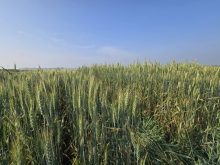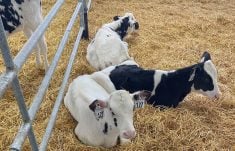A catch basin and filter strip system is minimizing the run-off of nutrients from manure from an 8,000-head-capacity feedlot near here.
Hillbrook Feeders, located on the southerly slope in the Blueberry Creek valley, built the system in 1995.
The idea was to create the collection pond to catch spring run-off but also high-rainfall events, said Gary Lewis, environmental extension lead with Clearwater County.
The catch basin is 150 feet wide by 300 feet long and was built at an elevation so that gravity can help drain the basin during the summer.
Read Also

The long march to autonomy
The big players in the machinery market keep adding pieces towards autonomous vehicles for farming, but how far away is a final product?
When the collection pond is full, water is released into a constructed wetland. Solids settle to the bottom and the water collects on top. Over the season, the pond fills up, solids settle to the bottom and liquid is drained through the pipe.
The constructed wetland was seeded to grasses, but cattails emerged as the wetland developed. Cattails are a natural filter and help purify water in wetlands. Vegetation that has seeded in the filter strip area has flourished.
Most of the filtering action happens in the grasses and in the cattails, said Lewis.
The filter strip is three acres in size, runs along the creek and is separated from the creek by a berm. Native forage species and willows distance the creek from the filter strip and the basin. At the end of the filter strip, the waste water is released back into the creek s riparian area. Tests have shown that the vegetation from the filter strip accepted the nutrients of the waste water without negative effects.
The idea is not to overload this area at all, so you re not going to damage the vegetation, said Lewis. The slow release is really important.
The project was developed by former owner Stan Taylor, Clearwater County Agricultural Service and Alberta Agriculture.
Spring water samples taken in 1995 showed high phosphorus levels in the creek.
Water quality was tested over time. Samples taken in 2000 showed the riparian filter strip system was a cost-effective way of removing harmful manure run-off pollutants. This system can be adapted to wintering sites and other areas where run-off is a concern.
For the most part, this is a very successful project, said Lewis.
Lewis said this project could be reproduced on a smaller scale. The Growing Forward program also has funding available for producers who are interested in creating these types of manure management projects on their land.















